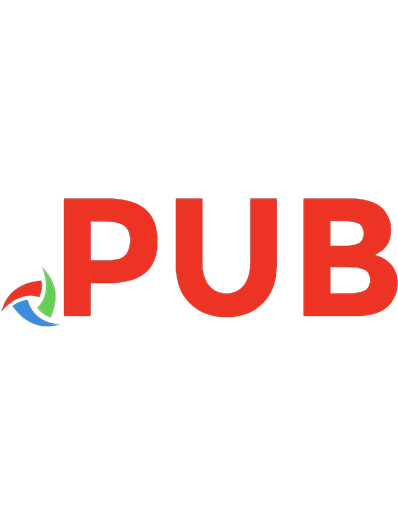All About Pull Production: Designing, Implementing, and Maintaining Kanban, CONWIP, and other Pull Systems in Lean Production 3963820284, 9783963820281
All About Pull Production is a practical guide for anyone looking to implement pull systems. It focuses on practical app
1,555 499 60MB
English Pages 441 Year 2021
Table of contents :
Praise for All About Pull Production
Foreword by John Shook, Chairman, Lean Global Network
Acknowledgements
Chapter 1Introduction
1.1Whom This Book Is For
1.2When Do You Need Pull?
1.3How to Read This Book
1.4A Brief History of Pull Production
Chapter 2Fundamentals of Pull Systems
2.1Misconceptions on Push Versus Pull
2.1.1Misconception 1: Make-to-Stock and Make-to-Order
2.1.2Misconception 2: Market Forecast Versus Actual Demand
2.1.3Misconception 3: Direction of Information Flow
2.1.4Misconception 4: ERP and Kanban
2.2Pull Is an Inventory Limit That Is Replenished!
2.3Alternatives to an Inventory Limit
2.4Why Pull Is So Superior
2.4.1Effect of Inventory on Performance
2.4.2It Reduces and Stabilizes Lead Time
2.4.3It Does It (Almost) Automatically
2.4.4It Is Suited for Almost Any Production System
2.4.5It Is Robust!
2.5What Helps You With Pull?
2.5.1Process Stability
2.5.2Material Availability
2.5.3Quality
2.5.4Flow
2.5.5Small Lot Sizes
2.5.6Leveling
2.6When NOT to Pull
2.6.1Lack of Control of Arriving Parts or Jobs
2.6.2Difficult or Expensive to Turn Off Process
2.6.3Very Long Replenishment Time
2.6.4Very Short Shelf Life
2.6.5High Level of Control and Superior Knowledge
2.6.6Invalid Reasons for Push
2.7What Problems Does Pull NOT Help With?
2.7.1Lack of Capacity
2.7.2Quality Problems
2.7.3Breakdowns and Lack of Material
Chapter 3Comparison of Different Pull Systems
3.1Criteria for Pull System Selection
3.1.1Make-to-Stock Versus Make-to-Order
3.1.2Production/Development Versus Purchasing
3.1.3Flow Shop Versus Job Shop
3.1.4High Demand Versus Low Demand
3.1.5Small and Cheap Versus Expensive or Large
3.1.6Discrete Versus Continuous Quantities
3.2Which Pull System Is Right for You?
3.2.1Suitability of Pull Systems
3.2.2Pull System Selection Decision Tree
3.3What Pull Systems Can Be Combined in the Same Loop?
Chapter 4FIFO and Other Limited-Buffer Inventories
4.1Fundamentals
4.1.1Reasons for FIFO: Decoupling
4.1.2FIFO Rule 1: No Overtaking
4.1.3FIFO Rule 2: Clearly Defined Maximum Capacity
4.1.4Breaking the Rules
4.2Variants
4.2.1First-Expired-First-Out (FEFO) and Variants
4.2.2Last-In-First-Out (LIFO)
4.2.3Other Limited-Buffer Inventories
4.3Elements
4.4Calculations
4.4.1Mathematical Approach (Not Recommended)
4.4.2Buffer Size Based on Buffered Duration
4.4.3Buffer Size Estimation
4.4.4General Rules for Buffer Sizes
4.5Advantages
4.6Disadvantages
4.6.1Minor Organizational Overhead
4.6.2Possible Block in Splitting Material Flows
4.7Frequently Asked Questions
4.7.1When Should I Not Use FIFO?
4.7.2Does FIFO Capacity Have to Match the Inventory Limit?
Chapter 5Kanban
5.1Fundamentals
5.2Variants
5.2.1Transport Kanban
5.2.2Two-Bin Kanban
5.2.3Triangle Kanban
5.2.4Kanban for Continuous Quantities
5.3Elements
5.3.1Kanban
5.3.2Supermarket
5.3.3Kanban Box
5.3.4Sequence Creation
5.3.5Queue for Production
5.4Calculations
5.4.1Fundamentals for Kanban Calculation
5.4.2The Kanban Formula for Production Kanban
5.4.3The Kanban Formula for Transport Kanban
5.4.4The Kanban Formula for Two-Bin Kanban
5.4.5The Kanban Formula for Triangle Kanban
5.4.6The Kanban Formula for Continuous Quantities
5.4.7The Alternative: Kanban Estimation
5.5Advantages
5.6Disadvantages
5.7Frequently Asked Questions
5.7.1Move the Kanban After the First or Last Part in a Box?
5.7.2Should You Use Physical or Digital Kanban?
5.7.3How Big Should the Supermarket Be?
5.7.4Where Should the Supermarket Be Located?
5.7.5What If My Products Have a Short Shelf Life?
5.7.6Can I Have Only a Single Kanban?
5.7.7How Many Parts Should a Kanban Represent?
5.7.8Can I Use Kanban for Job Shops?
5.7.9Can I Just Use an Excel File for Calculation?
5.7.10When and How Should I Use Extra Kanbans?
5.7.11How Do I Use Kanban for a Milk Run?
5.7.12What If My Parts Have Very Different Cycle Times?
5.7.13What Are Toyota’s Six Rules for Kanban?
Chapter 6CONWIP
6.1Fundamentals
6.2Variants
6.2.1CONWIP for Limited Space Production Lines
6.2.2CONWIP for Project Shops
6.2.3Joint Production Queue Kanban-CONWIP System
6.2.4Separate Production Queues Kanban-CONWIP System
6.2.5Kanban and CONWIP Cards at the Same Part
6.2.6CONWIP System Using Workload Limit
6.3Elements
6.3.1CONWIP Card
6.3.2Blanking of CONWIP Cards
6.3.3CONWIP Box
6.3.4Pool of Available CONWIP Cards
6.3.5Backlog of Open Jobs
6.3.6System Entry Point
6.3.7Queue for Production
6.3.8CONWIP Inventory
6.4Calculation
6.4.1CONWIP Calculation Fundamentals
6.4.2Customer Takt for CONWIP Calculation
6.4.3Replenishment Time for CONWIP Calculation
6.4.4CONWIP Calculation for Flow Shops
6.4.5CONWIP Calculation for Job Shops
6.4.6CONWIP Calculation for Workload Limits
6.4.7The Alternative: CONWIP Estimation
6.5Advantages
6.5.1The Big Difference: Number of Variants
6.5.2Less Inventory Than Kanban
6.6Disadvantages
6.6.1Does Not Manage the Production Sequence Automatically
6.6.2Uses Quantity Instead of Time to Keep Workload Constant
6.6.3A (Bit) More Work
6.7Frequently Asked Questions
6.7.1When to Return the CONWIP Card?
6.7.2When Should the Line Run?
6.7.3Does It Work for Job Shops?
6.7.4How Should I Handle Canceled Jobs?
6.7.5Can I Use CONWIP for Make-to-Stock Production?
Chapter 7POLCA
7.1Fundamentals
7.2Variants
7.3Elements
7.3.1POLCA Card
7.3.2Backlog of Open Jobs
7.3.3Job Release Date
7.3.4Decision Time
7.4Calculation
7.4.1The POLCA Calculation
7.4.2How Important Is This Equation?
7.4.3Example POLCA Calculation
7.4.4POLCA Estimation
7.5Advantages
7.5.1Limits the Inventory
7.5.2Provides Capacity for All Upstream Processes
7.5.3Overlap Avoids Blocks and Helps Communication
7.6Disadvantages
7.6.1A Bit of Complexity
7.6.2Accuracy of the Job Release Date
7.6.3Possible Deadlocks
7.6.4Overloading or Low Utilization
7.6.5Reduced Flexibility
7.7Frequently Asked Questions
7.7.1What About the First Process in Sequence?
7.7.2What About the Last Process in Sequence?
Chapter 8Reorder Point
8.1Fundamentals
8.2Variants
8.2.1Reorder Periods
8.2.2Reorder Point and Period Combination
8.2.3Fixed-Time, Fixed-Quantity Reorder (Not a Pull System!)
8.3Elements
8.4Calculation
8.4.1Reorder Point Method Calculation
8.4.2Reorder Period Method Calculation
8.4.3Caveats for Combining Reorder Point and Period
8.5Advantages
8.6Disadvantages
8.6.1Possibly Larger Inventory
8.6.2Possibly Slower Information Flow
8.6.3Possibly Increased Fluctuations
8.7Frequently Asked Questions
8.7.1When Should I Use Reorder Systems?
8.7.2Which Reorder System Should I Use?
8.7.3What If I Keep Having Stock-Outs?
8.7.4Can I Just Track the Total of All of My Part Types?
8.7.5Should I Reorder at My Reorder Point or Below?
Chapter 9Drum-Buffer-Rope
9.1Fundamentals
9.2Variants
9.3Elements
9.3.1Drum
9.3.2Buffer
9.3.3Rope
9.3.4Backlog of Open Jobs
9.3.5System Entry Point
9.4Calculation
9.5Advantages
9.6Disadvantages
9.6.1Assumes a Fixed and Known Bottleneck
9.6.2May Ignore Blocking of the Bottleneck
9.6.3May Pull Only Part of the Value Stream
9.6.4Only One Pull Loop by Default
9.7Frequently Asked Questions
9.7.1Should You Use Drum-Buffer-Rope?
9.7.2Can I Fix My Bottleneck?
9.7.3Is It Really a Pull System?
Chapter 10.....................................................Pull Systems Outside of Manufacturing
10.1Healthcare
10.1.1Single-Use Items
10.1.2Multi-Use Items
10.1.3Patients
10.2Project Management and Development
10.3Administration
10.4Construction Industry
Chapter 11.....................................................................................Pull System Layout
11.1Loop Sizes
11.1.1One Single All-Encompassing Loop
11.1.2Loops for Different Segments
11.1.3Loops for Individual Processes
11.1.4Single Loop for Splits in Material Flow
11.1.5Multiple Loops for Splits in Material Flow
11.1.6Separate Loops for Every Possible Path
11.1.7Serial Loop Types
11.1.8Overlapping and Intersecting Loops
11.1.9On the Hand-Over
11.2When to Break Loops
11.2.1Break Loops for Lot Size Differences
11.2.2Break Loops in Front of the Customer
11.2.3Break Loops for Splitting Material Flows
11.2.4Break Loops for Merging of Material Flows
11.2.5Break Loops Between Very Different Cycle Times
11.2.6Break Loops Between Different Shift Patterns
11.2.7Break Loops When Creating Different Variants
11.2.8Break Loops for a Large Distance Between Processes
11.2.9Break Loops to Save Space in Manufacturing
11.2.10Break Loops for Flexibility
11.2.11Break Loops for Change of Responsibility
11.3Effect on Inventory
Chapter 12.................................................................................Pull System Ramp-Up
12.1The Big Picture—Where to Start?
12.2Preparation
12.3Timeline
12.4Safety Stocks and Capacity for Implementation Downtime
12.5Prepare Information Flow
12.5.1The Cards
12.5.2The Digital System
12.5.3The Flow of the Information Upstream
12.5.4Sequencing
12.5.5Backlog of Open Jobs
12.5.6System Entry Point
12.5.7Production Queue
12.5.8The Flow of Information Downstream
12.6Prepare Material Flow
12.6.1FIFO Inventories
12.6.2The Supermarket
12.6.3Non-Supermarket Inventories
12.7Training of the Operators
12.8Resolve Material Supply Issues
12.9The Switch to Pull
12.9.1More Cards Than Material
12.9.2More Material Than Cards
12.10Debugging and PDCA
Chapter 13...........................................................................Pull System Maintenance
13.1Check for Lost Cards
13.1.1Reduce the Likelihood of Losing Cards
13.1.2Digital Cards
13.1.3Physical Cards
13.1.4Frequency of Checks
13.2Adjust the Inventory Limit
13.2.1When to Adjust
13.2.2Make-to-Stock: Tracking Delivery Performance
13.2.3Make-to-Stock: Predicting Delivery Performance
13.2.4Make-to-Order: Tracking Utilization and Lead Time
13.2.5How Much to Adjust
13.2.6Adding Cards
13.2.7Removing Cards
Chapter 14.....................................................................................................Summary
Appendix A.......................................................................................Table of Variables
Appendix B................................................................Value Stream Mapping Symbols
Appendix C............................................................................................COBACABANA
C.1Fundamentals
C.2Variants
C.3Elements
C.3.1The Order Acceptance Process
C.3.2The Order Release Process
C.4Calculation
C.5Advantages
C.6Disadvantages
C.7Frequently Asked Questions
C.7.1Can I Do This Digitally?
C.7.2Can I Use This for Delivery Time Estimation?
Appendix D..............................................................................Recommended Reading
Bibliography
Image Credits
About the Author










